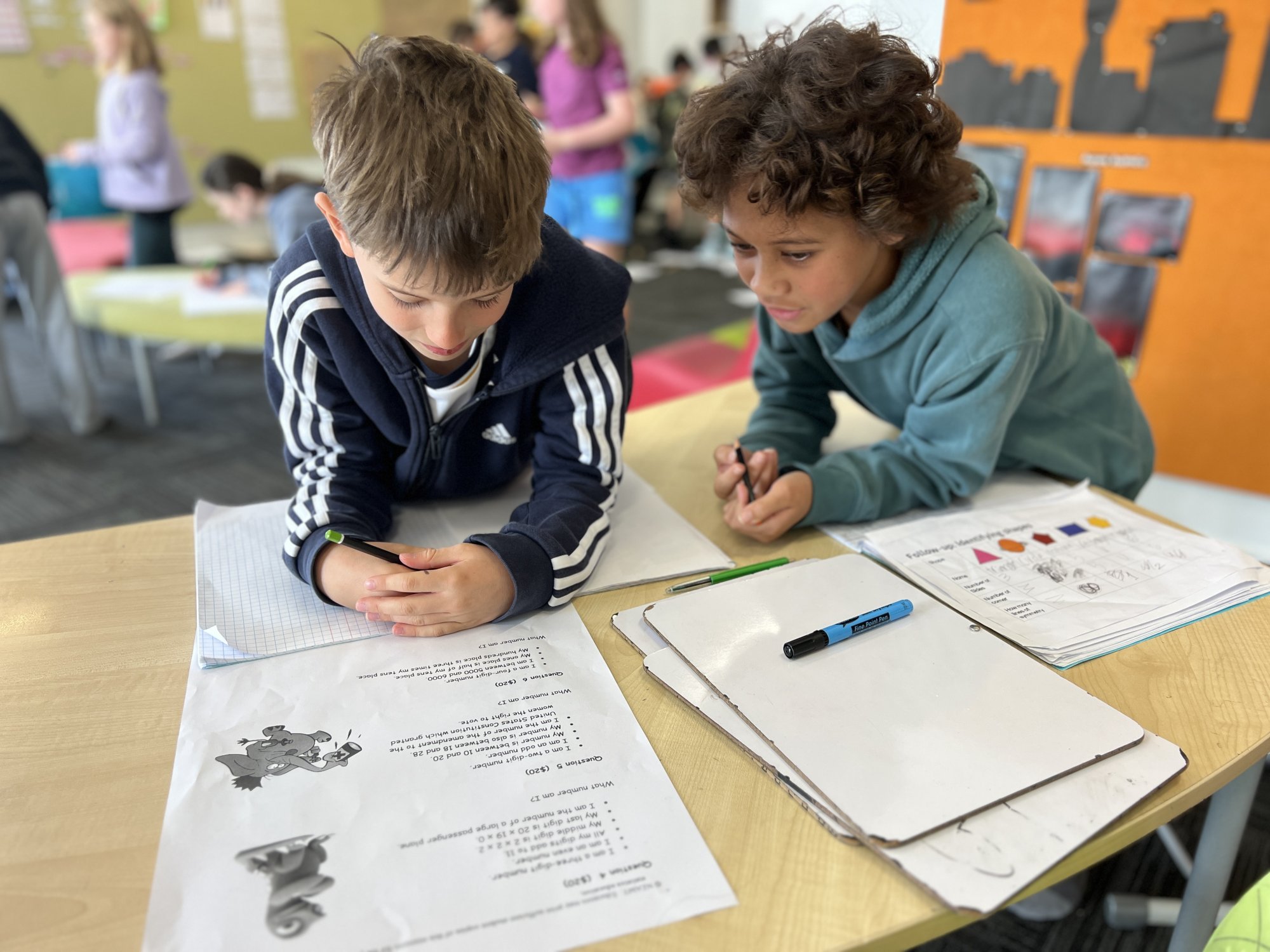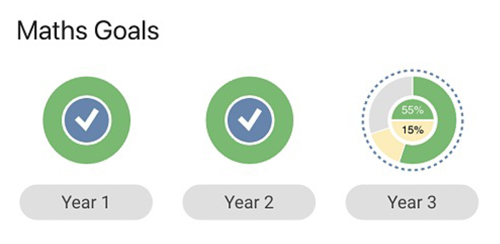
Over time, Westmere School | Te Rehu has developed a local curriculum to meet the needs of our learners and community. This is based on proven research and follows the New Zealand Curriculum (NZC) and Te Marautanga o Aotearoa.
Our pedagogy aligns with the Science of Learning as outlined in the NZC. Lessons often launch as a whole class and then move into small group teaching that we call workshops. In these smaller workshops, we are better able to cater to the specific needs of our learners.
A lesson/workshop will include all or most of the following:
Our day is divided into four blocks. The first three are set aside for Reading, Writing, Phonics and Mathematics. The afternoon block is for Kaupapa, Physical & Health Education, Art, etc.
Each term we have a Kaupapa focus around either Science, Social Sciences, Technology or The Arts. It may be a combination of two or more of these, e.g. our Pacific Migration and Waka Technology unit of learning focuses on why people migrate (Māori, early European settlers and our learners’ own whānau history), the technology and evolution of technology used in early Pacific migration and the Science of sinking and floating.


The hoe represent the 5 learner dispositions of ‘Learning to Learn’. Our learners are taught a range of strategies for any learning situation to empower them to make the right choices, problem solve, make links to prior learning, set goals, achieve them successfully and reflect on their learning throughout the process.
The waves represent our ‘Learning Pathways’. Each of the 7 waves represents an area of the curriculum. Through the learning pathways Westmere learners have engaging, challenging and relevant learning experiences to promote curiosity, inquiry and motivation to learn.
The waka represents the core principle of collaboration - through contributing and working collaboratively together greater learning, goals and outcomes can be accomplished.
Rather than a single cell rectangle, our studios are built for what would traditionally have been three classrooms. The studios consist of spaces of differing size, to accommodate a range of learning scenarios - wet areas (suitable for cooking, art, technology), smaller and larger spaces for coming together in groups of different sizes.
We have two teachers and two groups of children in each studio. Our studios are built to have three 'classes' in each one, but our current roll has meant we are able to spread out a bit more.
Although the space may look big and different, the teaching and learning is still similar to when you went to school. Each child knows which teacher they are working with. They have a kaitiaki teacher who does the roll with them each morning and who they work with during the first block. Your child may work with the other teacher in the studio during the day too. Children transition between teachers when coming back from a break rather than during the learning block. They do not find this tricky as they are often used to having multiple teachers in early childhood education (but if they do, we may support them with fewer changes).
Our teachers work really carefully to consider the needs across the studio. The teachers know all of the children in the studio and are constantly observing and sharing insights with one another.
Although the space may be large, children work in a specific area with a specific teacher during each learning block. The spaces have been laid out deliberately so that teachers can work with a small group while monitoring the other children in their group when they are completing independent work. Children know where they are able to work and who they are working with.
The spaces are set up with lines of sight and sound in mind. This means children work in calm, quiet spaces, and they know where the teacher is at all times.
Throughout the day, children work in small groups to meet their individual needs. Teachers work with each of these groups for workshops that are catered to the learning needs of those children. Children are grouped flexibly rather than streamed. This means that the groups change depending on the needs of the child at that time, e.g. a child may struggle with telling time and need a different workshop than when they are working on addition where they feel more confident. They are not locked into a 'stream' because they have difficulty in one area.
Sometimes, children need extra support. Depending on the level of need, a Learning Assistant may run extra groups in the studio, or the teacher might meet with the child on a more regular basis.
Although they are big spaces, they are purpose-built. There are acoustic panels and soft-furnishings to absorb sound. More importantly, our programmes, routines and expectations set our studios up to be productive learning zones. Children know the expectations around noise levels and how to work productively.
It can seem loud in the studios before school and at pick-up time. This is often because there are more people in the studio than usual, e.g. more adults, younger siblings and they are generally not engaged in an activity.
You are welcome to visit or come and help out in the studios during the day to get a sense of what it is like when children are engaged in their learning.
Like most schools around the country, our original school was built in the middle of the last century based on the Industrial Model of Factory production. The goal of learning in these environments was efficiency and standardisation - a one-size-fits-all approach.
For its time, The Industrial Revolution Model of education was very successful. It churned out carbon copies at a time when what society prized most was conformity. This school layout, nicknamed the “cells and bells” model, was based on the idea that schools exist for the transmission of knowledge. Teachers teach, and students learn.
The rectangular classroom was seen as the most effective design from the standpoint of an efficient use of space, to provide adults with the most 'control'. It was also a time when it was believed that the most effective way to educate children was by grouping them according to their age, not for any educational reasons, but rather for ease of having “tidy batches” to organise.
Term 1 = 25% through their wheels
Term 2 = 50% through their wheels
Term 3 = 75% through their wheels
Term 4 = 100% through their wheels
The following example is for a Year 3 student at the end of Term 3. They have achieved 55% of their goal wheel so they are on track with their learning in Maths.

If you have any questions about the goal wheels or your child's progress please see your child's studio/class teachers. They are more than happy to help you interpret the wheels.
Every six months we report on Reading, Writing (or Pānui and Tuhituhi) and Maths with a written comment. These comments are posted throughout the year. Teachers and children work together on these posts. They share what they have been working on and a sample of the work the child has been doing. These are to give you a sense of the type of work your child is doing between Whānau Forum where you get an opportunity to see more. Tamariki really enjoy it when you look at these posts together.
We hold Whānau Forums twice a year in Terms 1 and 3.
Whānau Forum is an opportunity for tamariki to share their learning with their whānau and celebrate their progress. They love having the chance to show you what they have been working on and explain how everything works at school and in their studio/class. The session is for half an hour. During that time, your child’s teacher will also have a chat with you about their learning. Teachers will make an appointment outside of these times to chat with you if they have any concerns about your child’s behaviour or learning. You are also welcome to make an appointment at any time if you have any concerns.